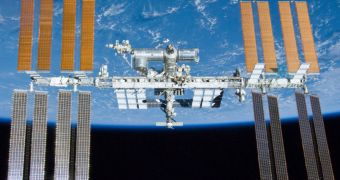The International Space Station (ISS) could potentially be used as a forward base of operations for lunar exploration, said officials from space agencies involved in the project at a meeting last month.
Representatives from NASA, the European Space Agency (ESA), RosCosmos, the Japanese Aerospace Exploration Agency (JAXA) and the CSA met to discuss how the ISS will be used from now on.
When the project to build the orbital lab was approved, countries involved in it only agreed to keep the station operational until 2015, and then decommission it.
But now plans are to keep it going beyond 2020. The US and Europe have already made the necessary arrangements to guarantee their involvement, and the other space agencies seem intent to do the same.
In addition to technical details about station operations, the participants at the meeting also discussed the possibility of using the outpost as a forward base for exploring the Moon.
They were basically talking about a science-fiction like space station, on which spacecrafts launched from Earth could attach themselves before separating and entering a lunar-bound trajectory.
Such an approach would have numerous benefits, and would feature a large number of possibilities in regards to the things that could be accomplished.
One such possibility, most likely inspired from the US-designed Project Constellation, is allowing for two or more spacecrafts to dock to each other on the ISS, and then leave for the Moon together.
The officials were not talking about using the orbital facility as a starting point for manned missions on the Moon, but rather around it, in lunar orbit, Universe Today reports.
In other words, the ISS could be used as a testing facility for new technologies in propulsion, heat insulation and other areas pertaining to space flight.
“We need the courage of starting a new era,” told the BBC News the director of ESA human spaceflight, Simonetta Di Pippo.
“The idea is to ascend to the space station the various elements of the mission, and then try to assemble the spacecraft at the ISS, and go from the orbit of the space station to the Moon,” she added.
“This is the great stepping off point of to the rest of the Universe. This is an important moment in the history of human exploration and human capability, […] and the space station is a visible sign of the future to come,” says Chris Hadfield.
The CSA astronaut will command a future long-term mission to the ISS. Expedition 35 will take place in 2013.

 14 DAY TRIAL //
14 DAY TRIAL //